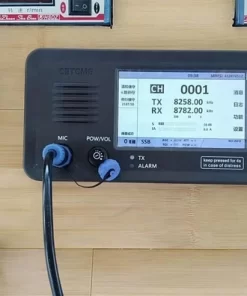ARPA radar (X-band, S-band and solid state)
Automatic Radar Plotting Aid (ARPA) radar are advanced radar systems used in maritime navigation to enhance situational awareness and safety at sea. ARPA radar utilize X-band or S-band frequencies and solid-state technology to provide accurate and reliable information about nearby vessels, land masses, and navigational hazards. X-band ARPA radar operate at higher frequencies (9 GHz), offering high resolution and precise target detection, particularly in congested or high-traffic areas. On the other hand, S-band ARPA radar operate at lower frequencies (3 GHz), providing longer detection ranges and better performance in adverse weather conditions, such as rain and fog. Solid-state ARPA radar utilize semiconductor technology instead of traditional magnetrons, resulting in improved reliability, reduced maintenance requirements, and enhanced performance.
ARPA radar incorporate advanced features such as target tracking, collision avoidance, and automatic plotting of vessel positions and tracks. They assist navigators in making informed decisions and maneuvering safely in dynamic maritime environments, contributing to the overall efficiency and safety of maritime operations.











